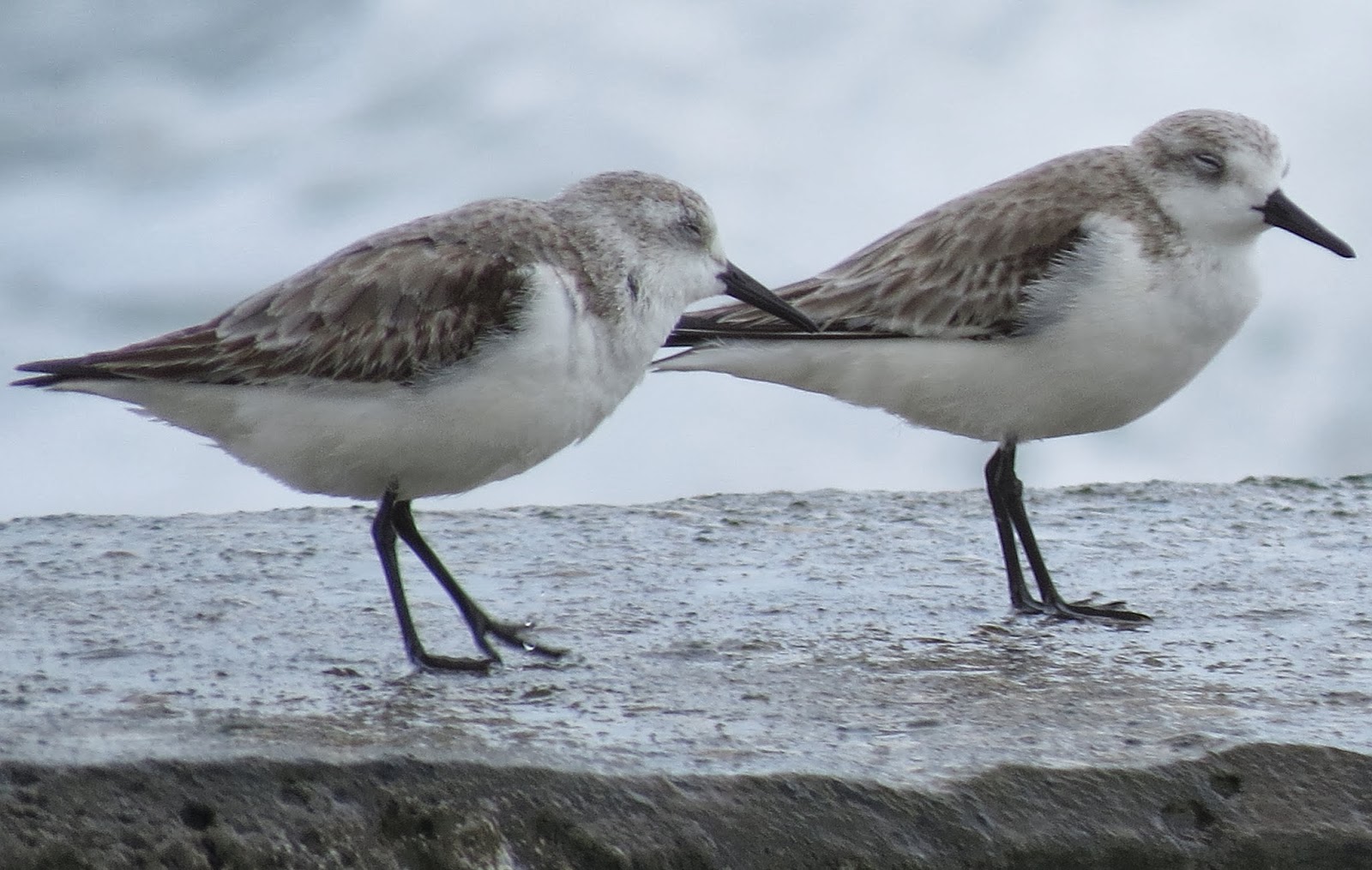January 17, 2014 Sunny 66F
On warm days, the local barrier islands
beckon. There are two: Hutchinson Island and Jupiter Island which
are separated by the St. Lucie Inlet. Hutchinson Island (Jensen
beach to Vero beach) contains many public beaches, preserves and
parks. Some of these visited to date are Walton Rocks, Bathtub Beach
(south end of the Island), Round Island (in Indian River County, as
far north on the Island as I have been), and Fort Pierce State Park.
Cultural note: Hutchinson Island is
where the original base and training facilities were for the US Navy
UDT, founded during World War 2. In 1962, President Kennedy changed
the UDT into the US Navy SEALS special force. SEAL, by the way, is
an acronym for Sea, Air and Land. An excellent museum has been built
on the original site. People will recognize in the museum yard two
“practice” space capsules, as it was the UDT-SEALS who recovered
astronauts who landed into the Atlantic after their missions.
Jupiter Island, at its north end, is
the major part of the Hobe Sound National Wildlife Refuge. The Refuge
is contiguous with the St. Lucie Inlet State Park. Further to the
south, in the middle of the very upscale homes is the Nature
Conservancy's Blowing Rocks Preserve, carved out of land donated by
Jupiter Island residents.
Cultural Note: many celebrities live
in this community. You may see a famous golfer at the local golf
club; a Quebec chanteuse; and a film actor known for his centerfold
photo in Cosmopolitan.
From the north end of Hutchinson Island
to the south end of Jupiter Island, enough climatic change occurs to
create a significant difference in the biota, with more tropical
species at Blowing Rocks. One may assume the 50 miles distance is
responsible for this. This has a small influence, Much more important
is the Florida Current, a warm ocean current which emerges form the
Gulf of Mexico, and is, even in winter, close to the shore at Jupiter
Island, but 20 miles off shore at the north end of Hutchinson Island.
At Round Island, you see a natural
large area of Mangroves. Red Mangroves and their White and Black
cousins, create, within the lagoons and quiet beach areas, the cradle
and the safe haven for life to develop, multiply and feed. Most of
the biological diversity owes its existence to the modifying climatic
and habitat features of the Mangroves. Across the Indian River
Lagoon at D J Wilcox County Preserve, fish, fish-eating birds and
dolphins abound. I always take the opportunity to explain to fisher
people that the excellent local fishing is entirely due to the great
job of preservation of the mangroves by public bodies,
notwithstanding great development pressures.
Jan and I met Tony and his friend Roy
at the D J Wilcox fishing/wildlife viewing pier. While we chatted,
Tony hooked and landed a very exciting large fish, seen here. I
have seen fishing shows dedicated to this species. Many fishers spend
thousands and even tens of thousands of dollars to catch one. They
are highly protected under Florida law, and Tony did the honourable
thing-he released it as it is out of season.
Readers, I leave it up to you to identifying this fish (comment or email). I will let you know who gets it right, and reveal the species name then. Tony isn't eligible!
Barrier islands along the south
Atlantic coast and through the Gulf of Mexico, attract a lot of
resort and vacation development, so conservation is a challenge. The
islands and the lagoons between them and the mainland, are some of
the riches and most biologically diverse sets of ecosystems on Earth.
An excellent web resource about North American barrier islands:
These Sanderlings, a bird that nests at the northernmost extremity of terrestrial Canada, but spends most of its time on North American beaches, at Bathtub Beach. Also, my nominee for Canada's cutest bird:
Often mixed with the sanderlings on beaches is the Ruddy Turnstone:

And the larger, peripatetic Willet, a Prairie nester:
Chasing larger fare, there are many Osprey inhabiting the Lagoon:
And, at D J Wilcox, the salt water pond behind the Lagoon has exposed mudflats at low tide, where the Least Sandpiper feeds:
While a roosting Yellow-crowned Night Heron emerges for an instant to take a look (Round Island):
And the Mangroves are also home to the Mangrove Buckeye butterfly:
At Blowing Rocks, Canavalia maritima, Beach Beans climb onto the Sea Grapes (not pictured). While, on the lagoon side, Pithecellobium keyense, Blackbead abounds this time of the year. This plant is native in North America, ONLY to SE Florida, and most are seen here and south. The "keyense" species name refers to the Florida Keys:
And for the marine mammal fans, the above Common Bottlenose Dolphin, Tursiops truncates, enjoys chasing fish at D J Wilcox's part of the Indian River Lagoon.
Thanks to Jan's keen eye, we spotted these tracks on the D J Wilcox trail. Guess what they are. Answer in the next edition. Extra points for probable candidate prey, evidenced by the scat at the lower part of the photo.
Let me know if you have preferences for future editions. Enjoy the weekend.











I was confused about who this "Jan" was. Don't you call her Tripp? Or T-ripster?
ReplyDeleteHaha. Tripp is any if her brothers. I do like T-ripster
ReplyDeleteI just want to mention that I like how the information is presented. And, can I enter the competition about the paw prints?
ReplyDeleteJan/aka Tripp/aka T-ripster
Thanks. No one else has tried, so go ahead.
Delete